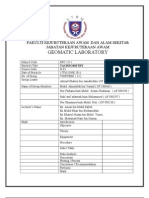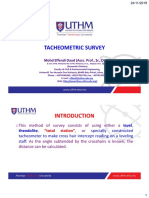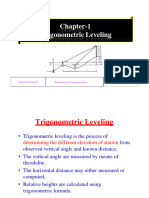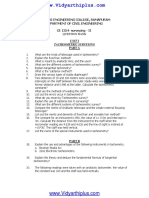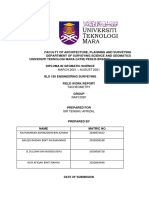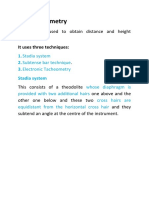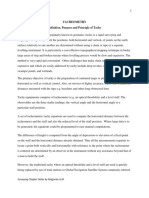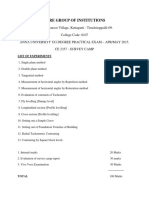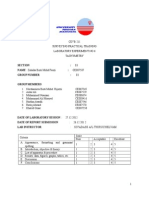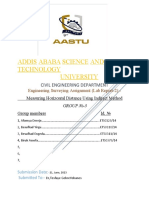0% found this document useful (0 votes)
59 views2 pagesTacheometry Survey Practical Report
The practical report details a tacheometry survey conducted using a theodolite and leveling staff to measure horizontal distances and height differences. The methodology involved setting up the theodolite, taking readings from the staff, and applying tacheometric formulas to compute results. The findings demonstrated the efficiency of tacheometry in surveying, particularly in challenging terrains.
Uploaded by
egonmwandavid624Copyright
© © All Rights Reserved
We take content rights seriously. If you suspect this is your content, claim it here.
Available Formats
Download as PDF, TXT or read online on Scribd
0% found this document useful (0 votes)
59 views2 pagesTacheometry Survey Practical Report
The practical report details a tacheometry survey conducted using a theodolite and leveling staff to measure horizontal distances and height differences. The methodology involved setting up the theodolite, taking readings from the staff, and applying tacheometric formulas to compute results. The findings demonstrated the efficiency of tacheometry in surveying, particularly in challenging terrains.
Uploaded by
egonmwandavid624Copyright
© © All Rights Reserved
We take content rights seriously. If you suspect this is your content, claim it here.
Available Formats
Download as PDF, TXT or read online on Scribd
/ 2















